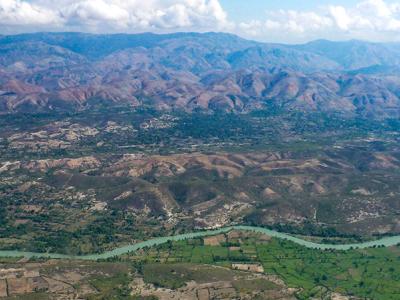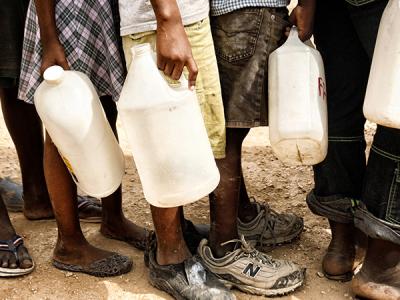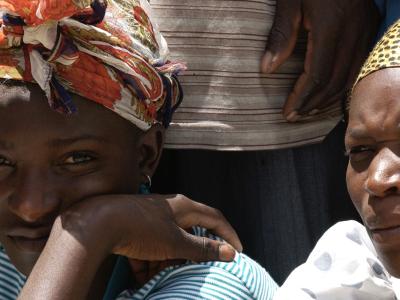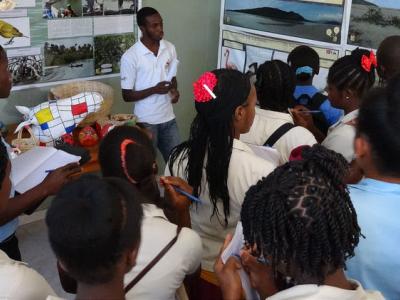Haiti is an island-country on the Caribbean, with a total land area of 28,000km2. About 70% of the island is mountainous. Haiti has tropical climate, and the vegetation cover is mainly scrub, conifers and leafy mangroves. The population of Haiti is currently estimated to be 8 million, with an annual growth rate of about 2.1%. Estimates indicate that the population of Haiti will be 10.3 million in the year 2015. About 45% of the population is aged 15 years and below. Haiti is the poorest country in the Western Hemisphere, with approximately 80 per cent of the population living in poverty (MDE, 2006). Its widespread poverty and ecological degradation make Haiti particularly susceptible to climate change impacts. Agriculture provides livelihood for nearly 70% of Haitians, through small-scale subsistence farming. GDP per capita on purchasing power parity basis was US$1,800 in year 2000. The composition of GDP is as follows: Agriculture – 32%; Industry – 20%; Services – 48%.
Rapid deforestation, at a rate of about 1,000 hectares per year between 2005 and 2010 (FAO, 2010), has left only three per cent of the country with forest cover (Williams, 2011). Consequently, 25 of 30 watersheds in Haiti are completely deforested (PAE, in MDE, 2006). This rate of deforestation results from the use of fuelwood to supply 71 per cent of Haiti’s energy requirements (BME 1999, cited in MDE, 2002). Vulnerability to climate change was further increased in January 2010, when a crippling magnitude 7.0 earthquake destroyed much of Haiti’s capital city, Port-au-Prince. Approximately two million people lived within the zone of heavy and moderate structural damage (CIA, 2010). Haiti also lies in the middle of a hurricane belt, with the most severe storms occurring from June to October (MDE, 2006). The country also has been plagued by political violence throughout its history (CIA, 2010).
Appropriate adaptation measures that are currently being given priority implementation are in the following project sectors: Coastal/Marine ecosystems, Water Resources, Terrestrial ecosystems and Food security.Every two to three years, Haiti faces cyclones, storms or tropical depressions. These events constitute the most fatal natural disasters and are responsible for floods, landslides, tidal wave, epidemics, loss of cattle and cultures and destruction of infrastructures and habitats.
Active Projects
Projects Completed
Latest Updates
See allMarch 2023 - As one of the three countries most affected by extreme weather events worldwide, Haiti has been working hard to formulate an…









